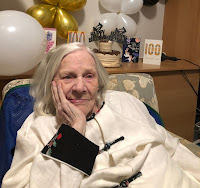Hood Canal: Adventure I, Day 3
Day 3
I drove north to Quilcene. Stopped at the University of Washington Kinkaid Shellfish Labaratory at Point Whitney. Drove out to the Marina in Quilcene. Drove 5 miles up a single lane gravel road to the top of Mt. Walker. Gas in Quilcene. Shopped at Whitney's Gardens and Nursery in Brinnon: many Rhodys in bloom. Dinner at Halfway House: 8 breaded Hama Hama oysters dinner.
Here are some of my photos of the area:
Vancouver WA 110 miles north to Olympia
Olympia WA 23 miles north to Shelton
Shelton WA 41 miles north to Brinnon
Shelton WA - Images
Shelton WA - Information
Hood Canal, Fjord, WA
Lake Cushman, WA
Skokomish Twana Native Americans
Skokomish River, WA, Images
Potlach State Park
Hoodsport WA
Liliwalup
Hamma Hamma
Duckabuch
Brinnon WA
Dosewallips State Park WA 39 miles north to Port Townsend
Dosewallips SP Images 13 miles north to Quilcene
Dosewallips SP Campground
Dosewallips River Images
Dosewallips Oyster and Clam Harvesting
Quilcene
Dabob Bay
Port Townsend 215 miles south to Vancouver
Four Days at Grayland: Extensive Travel Guides, Yurt Camping notes, local cities and villages, reports, commentary, Yurt Camping Information, Native American Information. Yurt camping on the coast in Oregon and Washington.
Tai Chi Chuan at the Beach: Please join Michael P. Garofalo for a Taijiquan Meetup/Gathering/Retreat at Dosewallips State Park, 7 am, Yurt C. I hang a kite on my Yurt that is shaped like a Salmon Fish. Campfire chats and a little practice sharing.
The best book I used to study general travel options for the Hood Canal
for my trip in May 2024 was:
Olympic Peninsula with Olympic National Park. By Jeff Burlingame.
Moon, 5th Edition, 2024.
Books I have found useful in my study of the Native American People of Olympic National Park (fournded in 1938) include:
Olympic Peninsula with Olympic National Park. By Jeff Burlingame. Moon, 5th Edition, 2024.
Images of America: Hood Canal. By Michael Fredson. Arcadia, 2007.
Native Peoples of the Olympic Peninsula|: Who We Are. By the Olympic Prninsula Intertribal Cultural Advisory Committee. University of Oklahoma Press, 2015. This book covers S'Kallam, Skokomish Twana, Sqaxin, Quinault, Hoh, Quileute, and Makah Native Americans in the area.
The Olympic Peninsula. By Ericka Chickowski. Moon, 2009.
Longstreet Highroad Guide to the Pacific Northwest. By Allan and Elizabeth May. Longstreet, 2000.
Tai Chi Chuan at the Beach: Please join Michael P. Garofalo for a Taijiquan Meetup/Gathering/Retreat at Dosewallips State Park, 6 pm, Yurt C. I hang a kite on my Yurt that is shaped like a Salmon Fish.
Four Days at Grayland: Extensive Travel Guides, Yurt Camping notes, local cities and villages, reports, commentary, Yurt Camping Information, Native American Information. Yurt camping on the coast in Oregon and Washington.
Images from the Internet




























